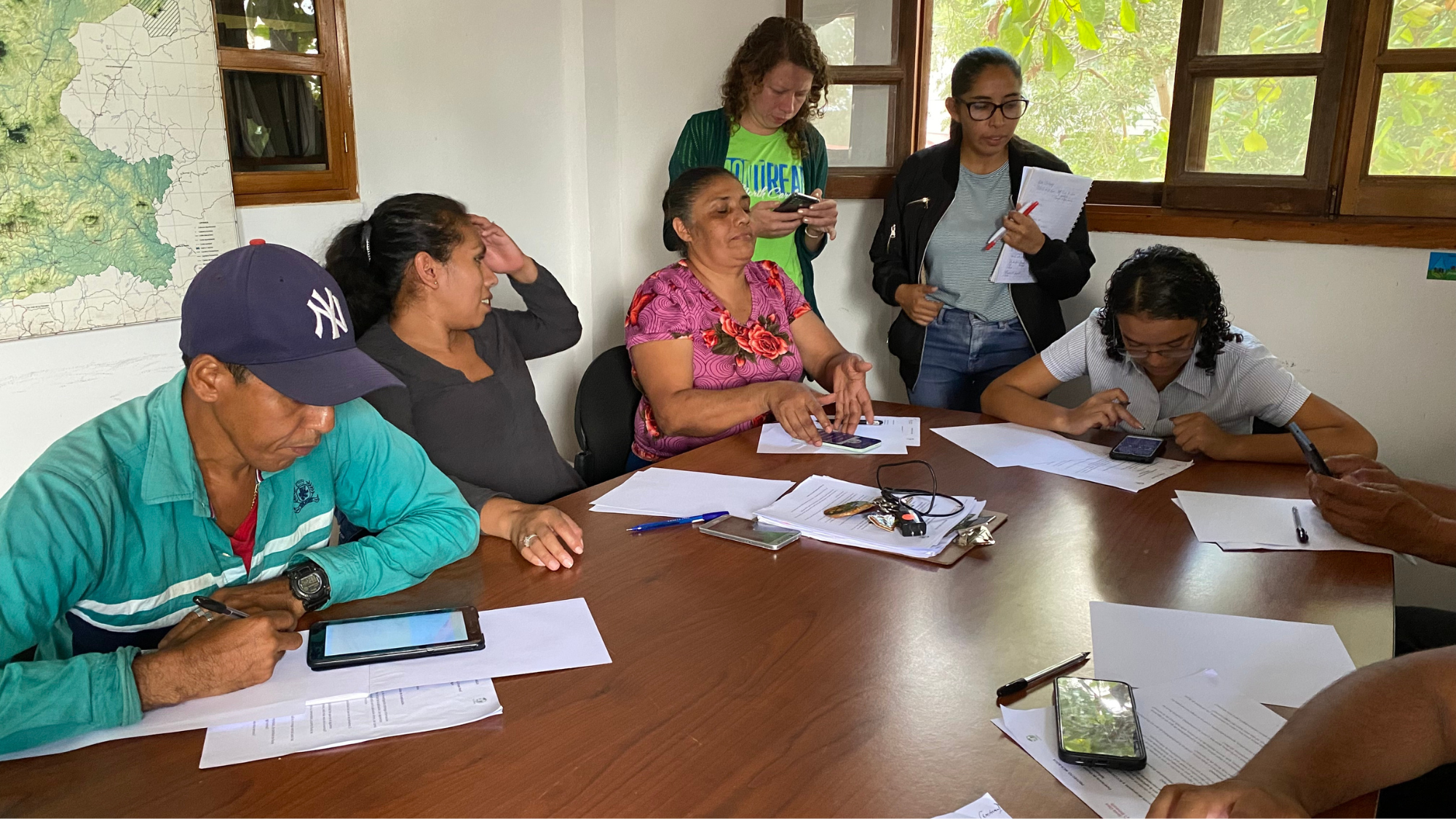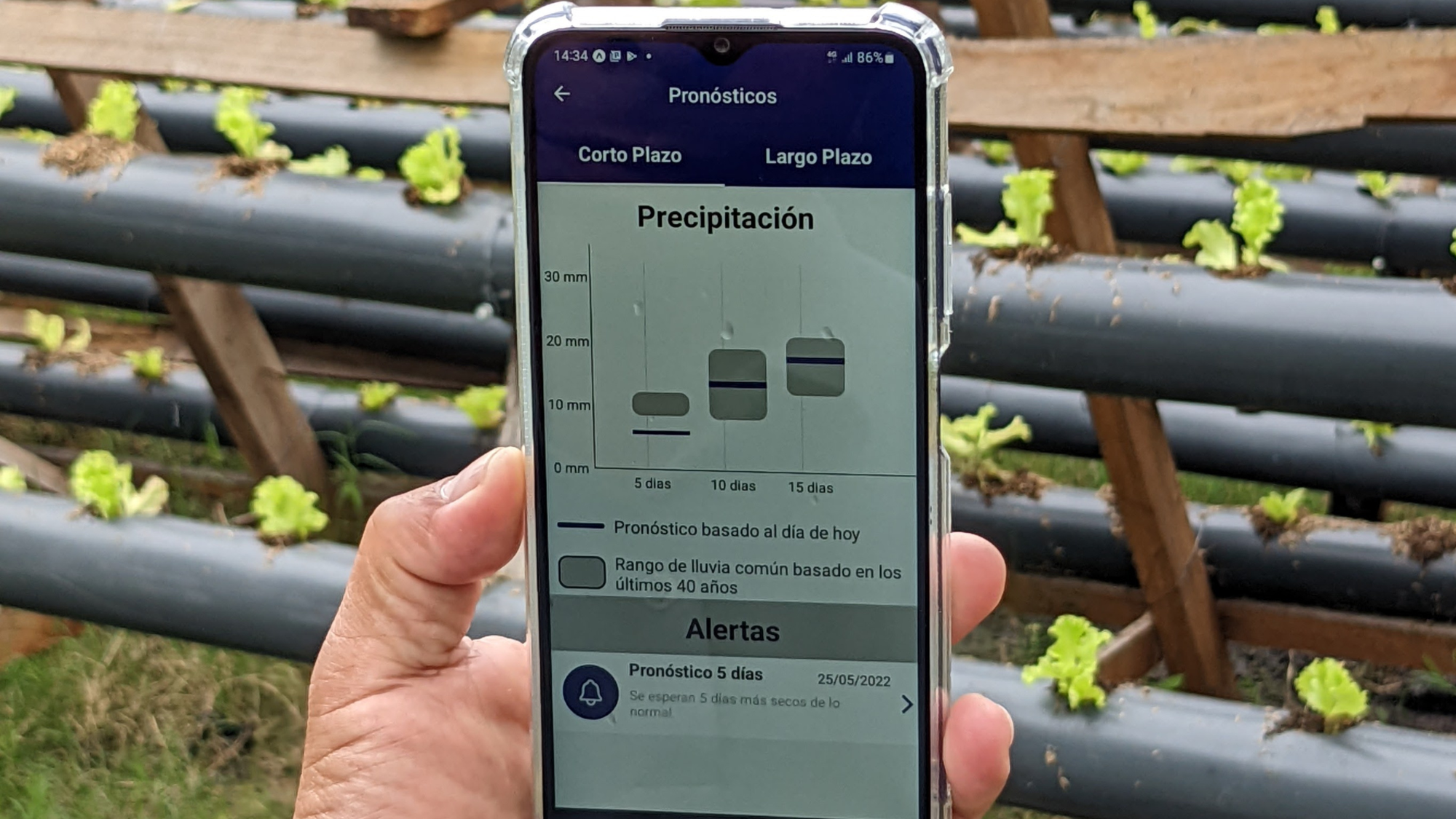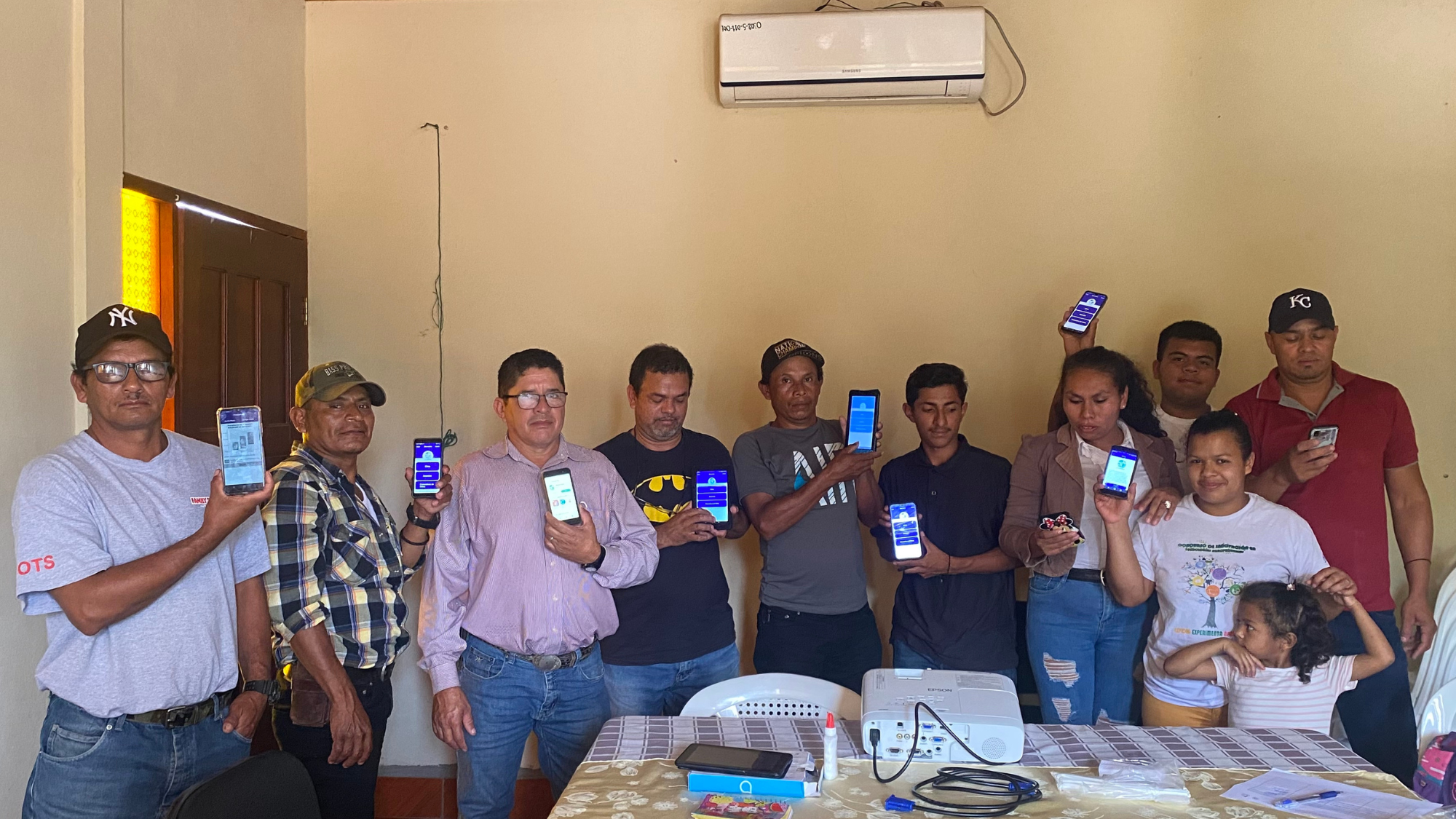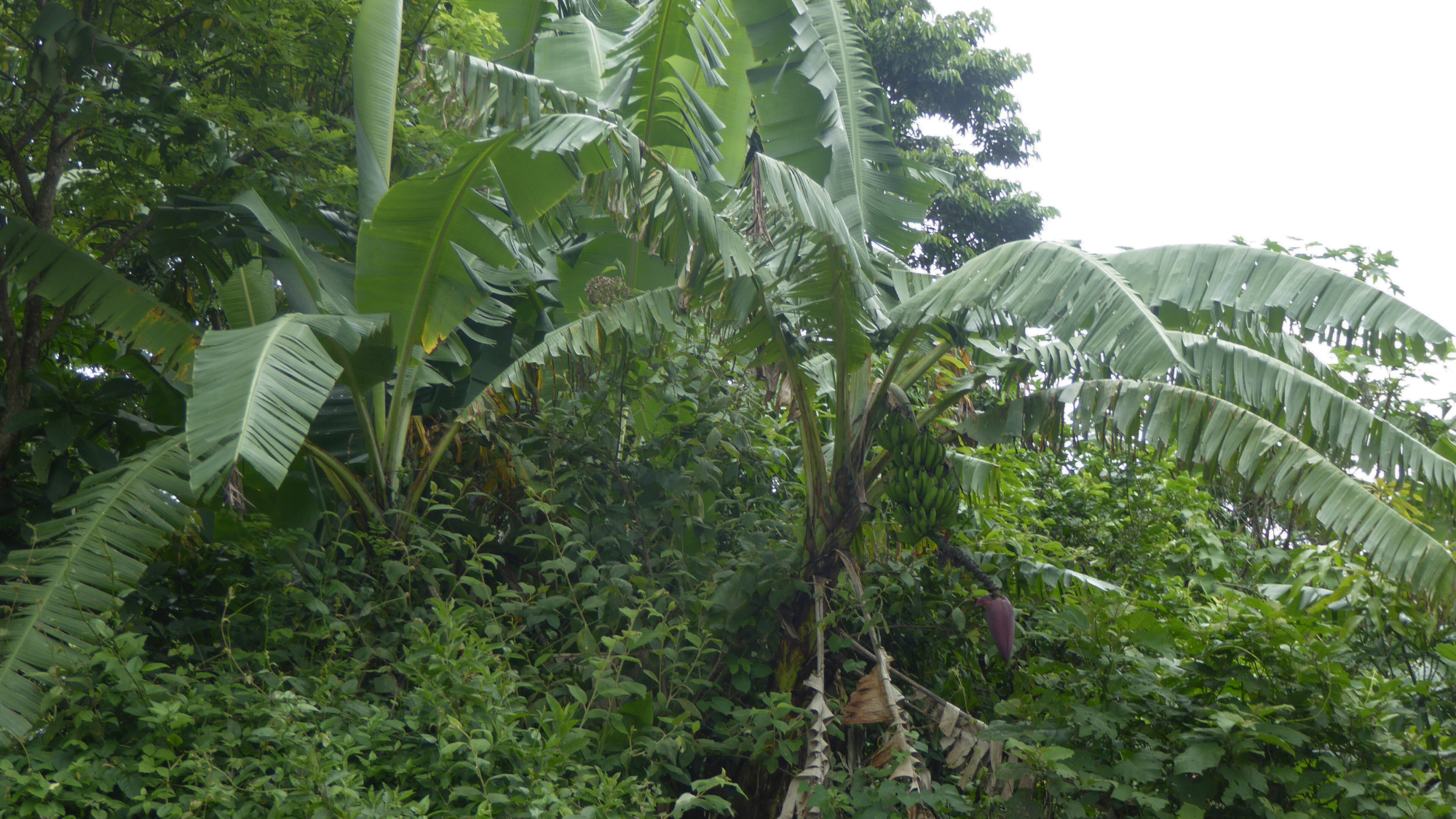Our Motivation
Smallholder farmers are highly vulnerable to climatic variations as most depend on rain-fed agriculture, and cultivate marginal areas susceptible to climate change. In several focus groups with smallholder farmers in Northern Nicaragua, co-organized by our collaborator CII-Asdenic, participants highlighted the need for critical access to real-time climate forecasting that supports their decision-making process. Improved decision-making using forecasts can also provide a measure of resilience in adapting to the impacts of climate change.
Our Approach
To provide these communities in Nicaragua with local climate forecasts, our team is preparing short-term and seasonal rainfall forecasts, as well as other climate change information, that is then distributed through a new forecasting app we have developed: NicaAgua. Seasonal forecasts, consisting of 3-month probabilities of wetter, drier, or normal conditions, are based on the U.S. National Oceanographic and Atmospheric Administration (NOAA)’s North American Multi-Model Ensemble Project (NMME) and assembled by the International Research Institute for Climate and Society (IRI). Short-term global ensemble forecasts of precipitation are obtained from the Climate Hazards Center at UC Santa Barbara and are based on the National Centers for Environmental Prediction Global Ensemble Forecast System. Our app presents graphics summarizing forecasts and historical data in box plots for 5, 10, and 15 days ahead.
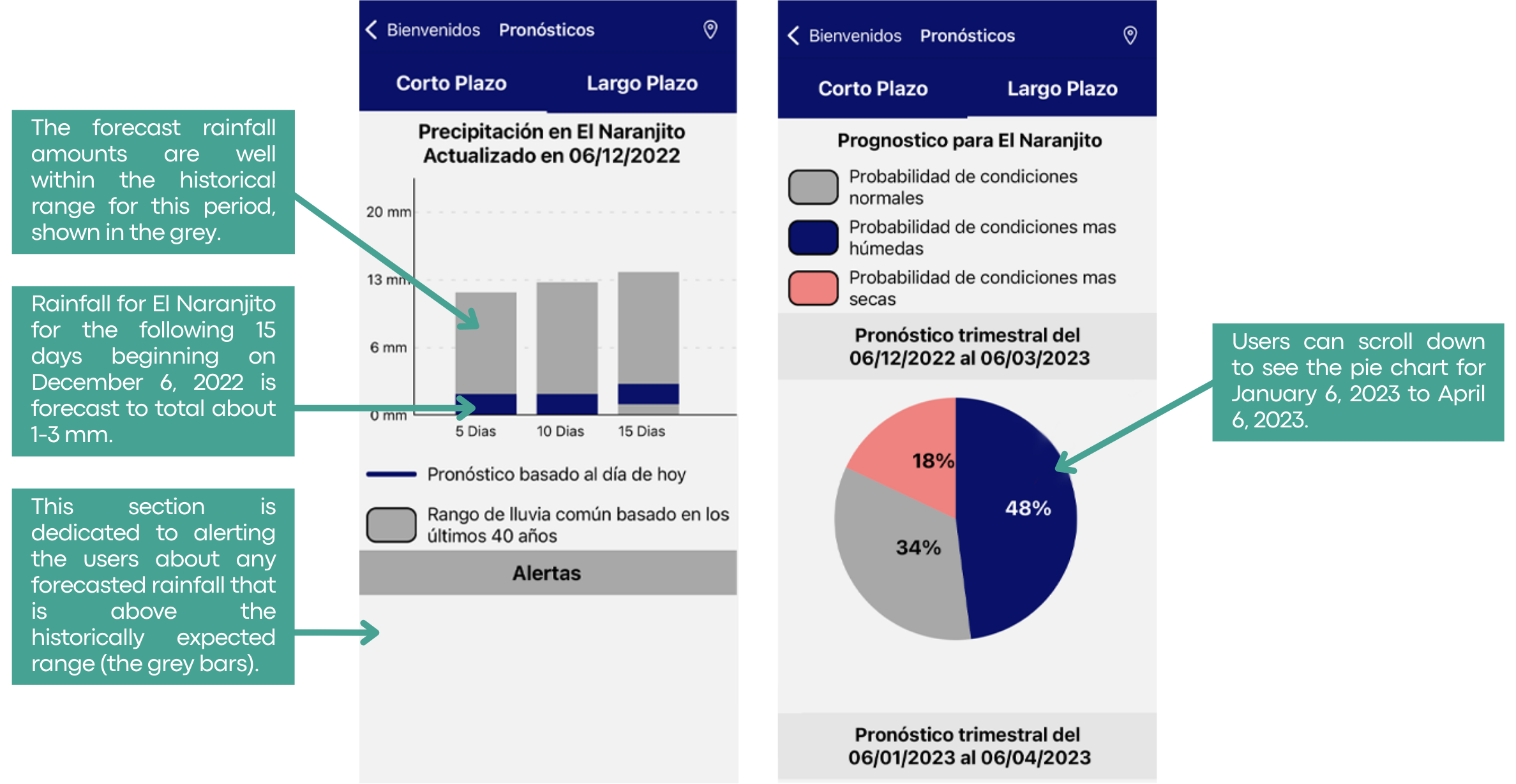
Annotated screenshots of a development version of the app, showing the short-term forecast (left) and seasonal forecast (right).
Our Results
We have established that the forecasts have meaningful skill, especially during the later growing season in northern Nicaragua. The app provides graphical forecasts for use by farmers, and we are working with ASDENIC and farmer communities to seek ways to improve and expand on the information we provide and how we present it.
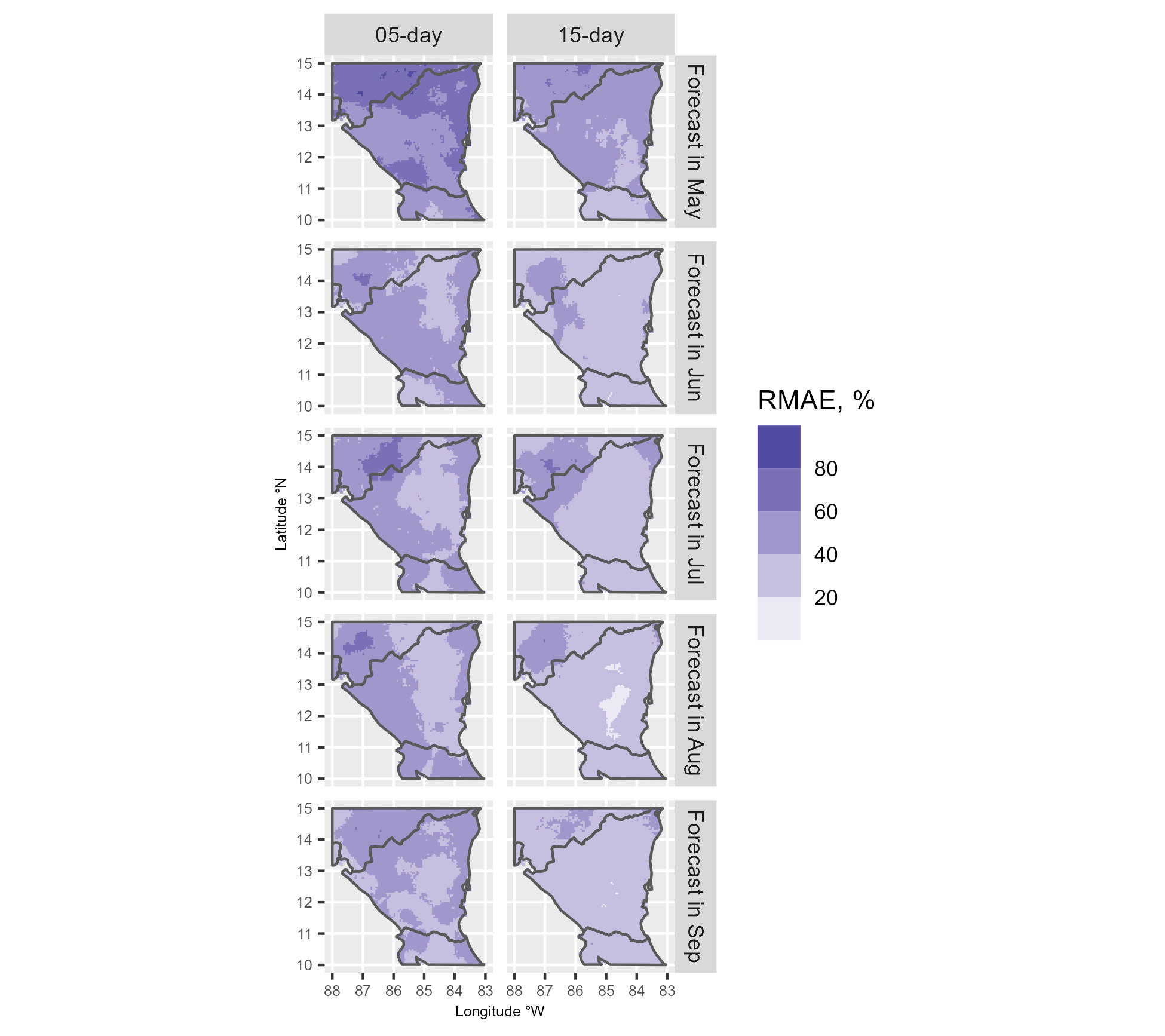
The skill for the 5-15 day forecasts produced for north-western Nicaragua in the app is moderate, ranging from 40-80% of relative mean absolute error (RMAE) during the months of the rainy season.
Figure by Ed Maurer.
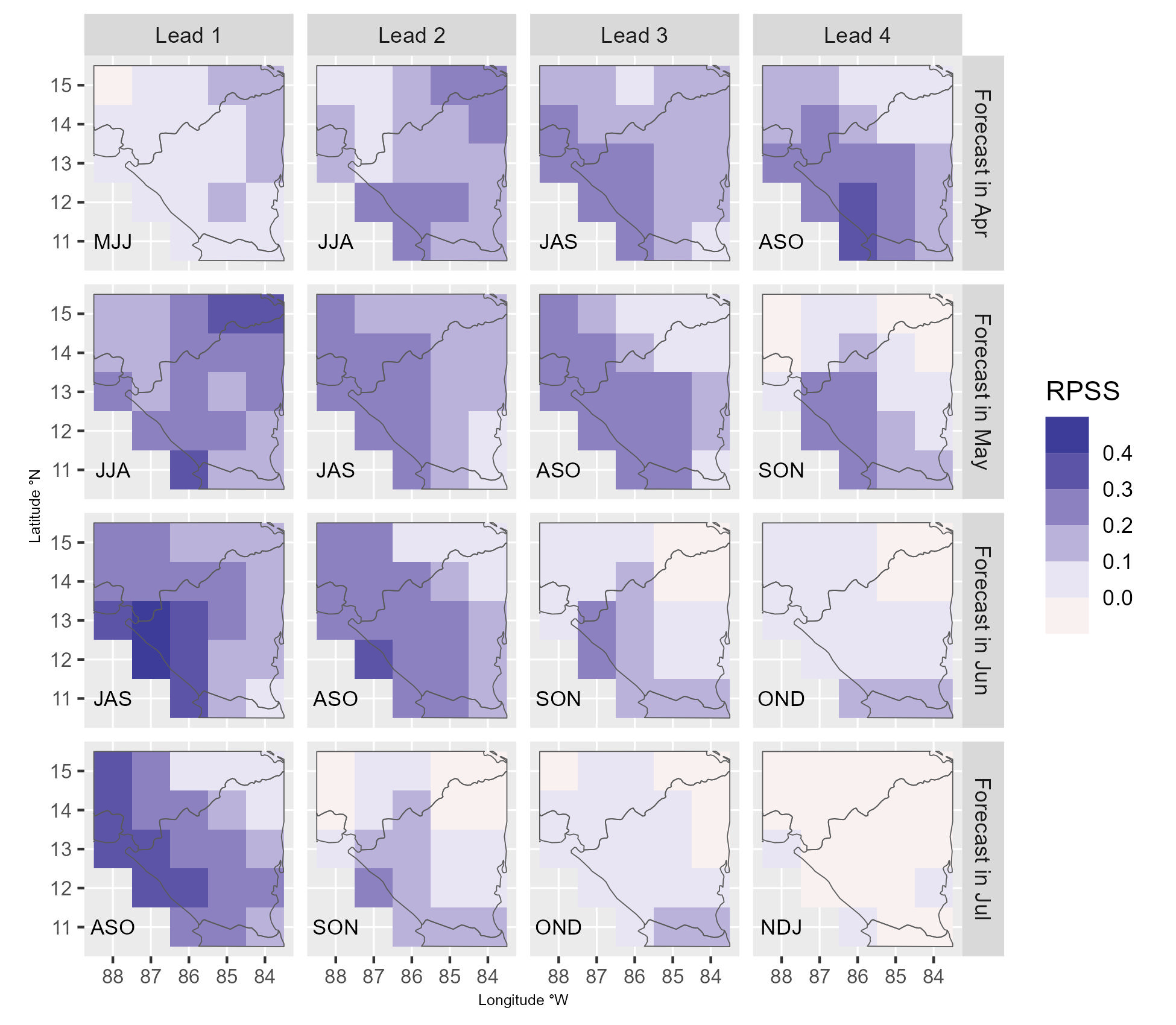
The ranked probability skill score (RPSS) for seasonal forecasts over north-western Nicaragua is reasonably high. An exploration of seasonality indicates that transitional times, like the beginning and the end of the rainy season have lower skills.
Figure by Ed Maurer.
